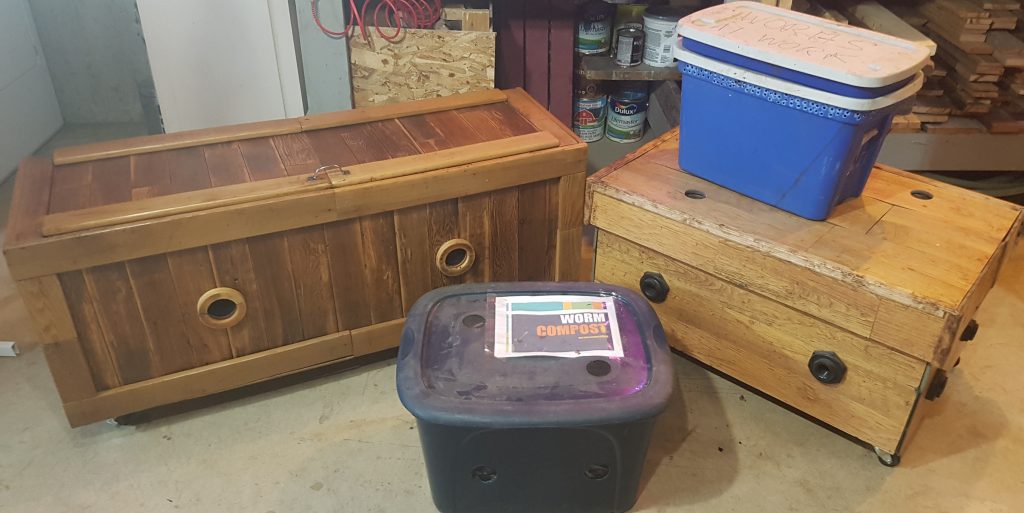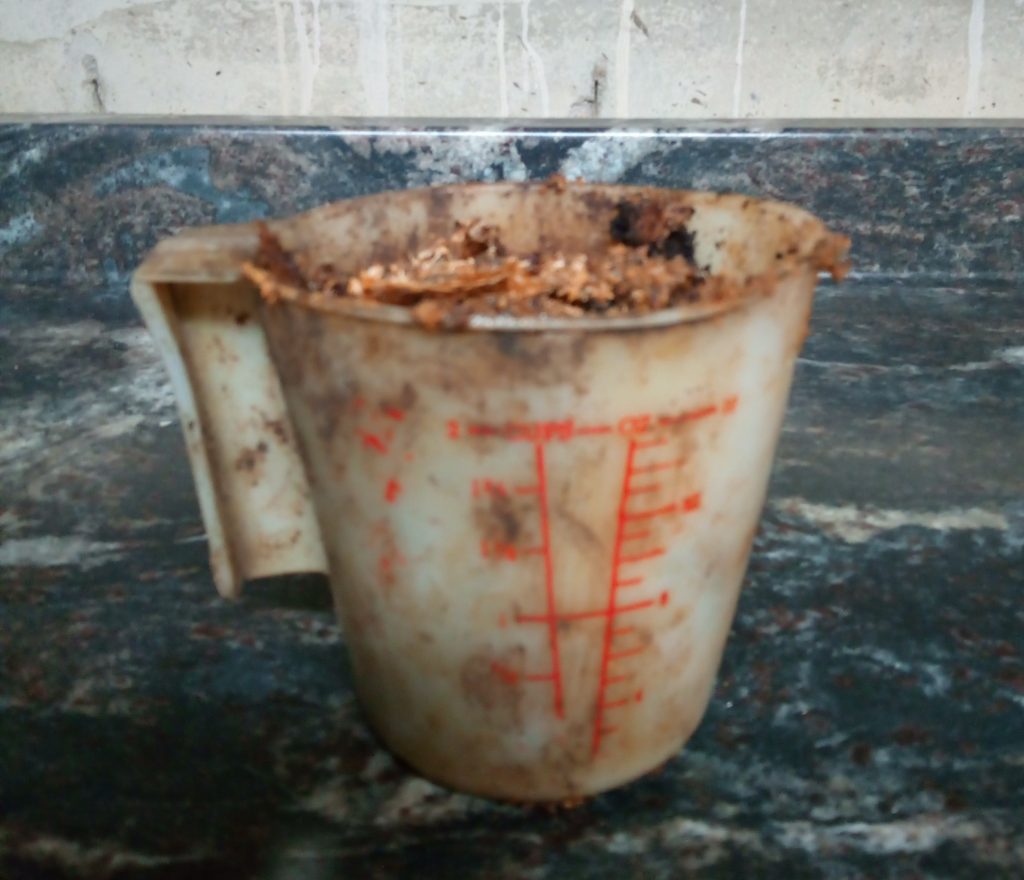Feeding Bokashi Compost to the Worms!!

How did Bokashi vermicomposting begin? Well, when composting, it is important to have a place for the finished product.
Composting in Northern Climates
In northern climates, a lot of the active composting occurs in the summer months, with only the die-hards continuing to add to the piles through the winter. As a result, many cities and municipalities are now offering year round community composting programs, much like the curbside garbage and recycling collection. Which is an amazing step forward, in my opinion.
With curbside compost collection not an option however, and limited space. Vermicomposting has been our method of choice for composting much of the house hold organic waste. One shortfall of composting with worms is that worms don’t “eat” everything.

Bokashi composting, using an anaerobic fermentation process, is another great way to compost in small spaces. The shortfall I found with Bokashi composting, in the winter in Canada, is storage space for the pails once they were full. My family of 4 filled 1 pail per month when I experimented with the process in 2019. Over the course of the winter, that would be 4-6, maybe 7 – 20L pails. That is a substantial volume of material to bury in small condo-sized gardens come Spring.

Bokashi Vermicomposting?
The intention here is to send the food scraps the worms won’t eat on their own through the Bokashi process, and then feed the finished Bokashi to 1 dedicated worm bin. 1 worm bin will be for this experiment because the pH (acidity) is different in Bokashi than in vermicomposting. The Bokashi vermicomposting worms may be a little more sour than the others. Sorry for the pun…

“Renovating” the worm home at my kids Montessori school over the Christmas holiday, left me with a small worm bin. One tidbit I picked up in my research was to start small. Therefore, this is a perfect opportunity to start changing the pH of the clew, and to start small. I will move them into a larger bin as they need the room.
The Continuing Saga of Bokashi #2

Check out the Bokashi pages on the website to find out more about the origin of the Bokashi being used to start the worms on it.
Bokashi #2 was finished in 2019. It should be good, but the worms will be the judge.

There is a relatively small population of worms in this bin.

Two cups of Bokashi is added. It is moist, but not wet so it should work with the excess moisture from the worm bin. There are chicken bones and eggshells visible, which are 2 things I normally keep out of my worm bin.
Bokashi Vermiculture pH



Although the water is murky to say the least, I am not waiting for the sediment to settle. There is a definite blue-green tinge to the worm bin sample, and a definite red-orange tinge to the Bokashi. The Bokashi has a lower pH. The important part is to not let the pH of the whole bin drop too low.

Paper Cover for Bokashi Vermicomposting
Visit the Vermicomposting pages on the website for more info on just the worms, but the shredded paper cover is especially important when doing this. The small bin coupled with the Bokashi may be an even larger attractant for fruit flies than just the worm bin.
That is it. Cover it up and place it with the rest of the bins. I will check back occasionally over the next couple weeks and see how it goes. Check back for future updates, or Contact Me directly to chat.